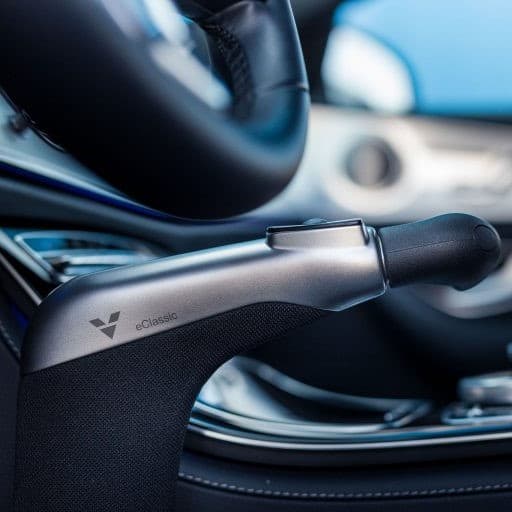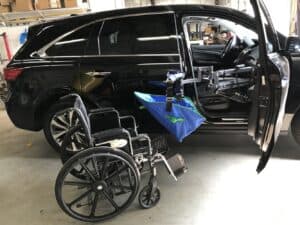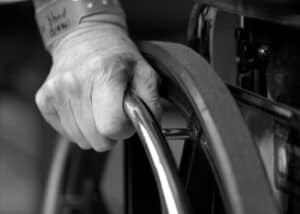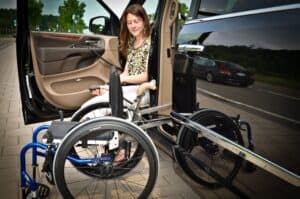Electronic hand controls enable people with restricted lower body mobility to drive accessible vehicles independently using electronic equipment. Hand controls allow drivers to operate the brake and gas accelerator by hand, using handles, levers, and/or controls mounted on or below the steering wheel. Often, primary hand controls operate the gas and brakes, while secondary controls operate windshield wipers, the horn, air conditioning and other functions. Hand controls are established through a mechanical linkage that maintains the original function of the gas pedal and brake pedal.
Hand Control Styles
Hand controls can only be installed in vehicles with an automatic transmission, power steering and brakes. There are many different types of electronic hand controls for vehicles, therefore it is best to speak with a mobility specialist to identify the best option for your needs.
The four main types of hand controls used for the accelerator and brake pedals are:
Push/Rock Style
The push/rock hand control operates the accelerator and brake by rocking downward towards the driver. If the handle is rocked backward, the vehicle will accelerate and when the handle is rocked forward, the car will brake.
This style of hand control is ideal for drivers with no finger dexterity or fine motor skills.
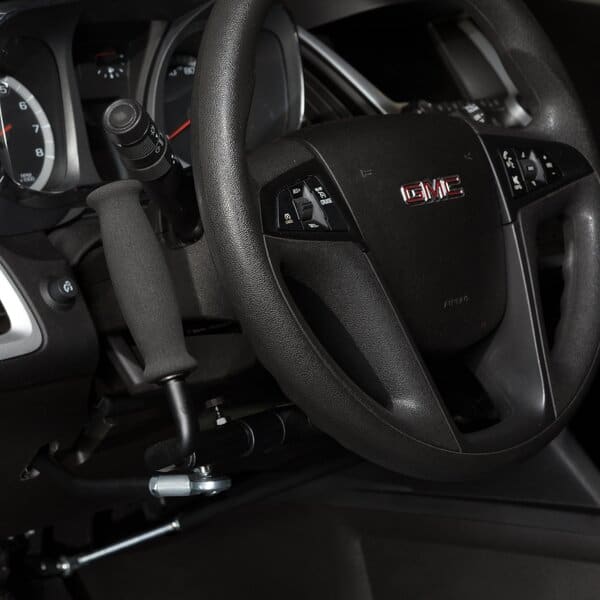
Push/Right Angle Style
The push/right angle style of hand controls operates by pulling the lever downward toward the driver’s right thigh. This method is designed in such a way that it allows drivers to push the handle upward toward the instrument panel to brake and downward at a right angle to accelerate.
This style of hand control is ideal for drivers with limited finger dexterity or fine motor skills. It is often referred to as the universal method, as it can be used for most disabilities.
Push/Pull Style
The push/pull hand control style allows drivers to push the lever forward to brake and backward for acceleration. This style also allows for the installation of a three-post hand interface, which offers drivers greater control.
This style of hand control is often used for drivers with limited finger dexterity or fine motor skills.
Push/Rotate Style
The push/rotate style requires drivers to engage in a twist and push action. To accelerate, the driver must twist the lever and to brake, the driver must push the handle forward. The twist motion is similar to a motorcycle throttle.
This style of hand control is most often recommended to drivers with full or limited finger function. It is also a good option if the vehicle has limited space, for example, a car. The device fits next to the steering wheel, while still providing full access to the wheel and all other controls.

Hand Driving Controls Equipment
Steering Column Mounted
The steering column mounted controls are the most commonly used equipment. They can be installed with no permanent modifications needed to the vehicle. The hand control lever is mounted to the steering column, which makes it very accessible and easy to use.
The steering column mounted hand control equipment are available in the following styles:
- Push/Right
- Push/Rock
- Push/Pull
Floor Mounted
Floor mounted controls are installed on the right side of the driver’s seat and resemble a gearshift. The positioning ensures that there is an unobstructed path for transferring in and out of the vehicle. This equipment is not as common but can be installed with no permanent modifications needed.
The floor mounted hand control equipment are available in the following styles:
- Push/Pull
- Push/Rock
The Ring
The ring hand control equipment is mounted over or under the original steering wheel. It is operated by using your thumbs or fingers.
It is important to consult a mobility specialist to ensure you select the right hand control equipment and style for your needs. It is also important to research the requirements to legally operate a vehicle with hand controls. All states allow hand controls but it is federally required that you complete training on how to use them.
Hand controls are an ideal solution for people with restricted lower body mobility to help them maintain their independence.

